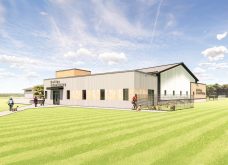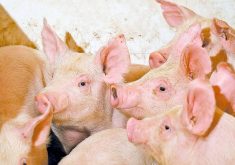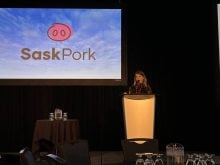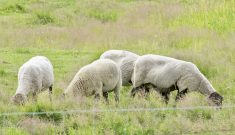Glacier FarmMedia – Maple Leaf Foods expects to complete its change to open sow housing with years to spare.
The company has completed more than half of its transition, according to Dr. Greg Douglas, vice-president of animal care.
Along the way the company has learned a lot about housing and managing sows in groups.
Why it matters: The hog industry had adopted new standards for animal housing that must be in place by 2024, a deadline which will come quickly for farmers.
Read Also

BinSentry sensors reduce feed-bin outages
BinSentry sensors mean fewer feed bin outages and more efficient deliver for feed mills.
About 40,000 of the company’s 70,000 sows are currently managed under the advanced open-housing system, and the company expects to complete the shift by 2021.
The pork industry has until July 2024 to do away with gestation crates, except for a period right after breeding. By that point, all sows and mated gilts must be housed in groups, individual pens or, if stalls are still used, given the chance for exercise. The changes came down with the release of the National Farm Animal Care Council’s Code of Practice for the Care and Handling of Pigs in 2014, which sought to phase out gestation crates.
New barns have had to meet the standard since the document’s release. The new code has mandated that any new or rebuilt facilities be fit with group housing, and that any new or replaced stalls for use right after breeding had to be big enough that the pig could stand without touching the edges and lie down without pushing into the next stall.
What Maple Leaf has learned:
- The company went back into barns when it learned more about managing sows.
- An advanced open sow housing system is now used which reduces breeding stall time from a month to seven to nine days.
- Sows move in social groups from breeding to gestation to farrowing.
Maple Leaf Foods says it has rebuilt 31 barns so far. Animals are sent to a training facility while facilities are being rebuilt to familiarize both pigs and staff to the new system and the electronic sow feeders that are now status quo for Maple Leaf Foods.
“We can monitor whether one animal picks up on the new system right away or if another animal takes a lot longer to learn the system,” Douglas said. “We will monitor that with computers, where we can tell which animals go through the system, and then if an animal needs more time or if it needs human help to show it the way, then we do that.”
Some barns have been retrofitted twice, Douglas said. A year and a half into conversions, the company opted for what it describes as an “advanced open sow housing system,” a system it says cuts down breeding stall time from over a month to seven to nine days. The company returned to refit the already converted barns.

The advanced system promotes more mobility compared to other systems where stall structure is largely intact and sows have to back out of the stall into a common area to socialize, the company says.
Under the design, Maple Leaf Foods houses 40-60 animals per enclosure. Electronic feeders sit at the periphery while the wider room is segmented into periodic alcoves with half-walls, something the company says will allow their animals to socialize in smaller groups or escape any aggressors, if needed. The company has also opted for one-way, single animal feeders to avoid a competitive feeding environment and give control over each pig’s ration.
“We’ve found that our densities are optimal for animals figuring out quickly what social structure they’re in and they access the feeders on their own and we get very little competition,” he said.
Managing competition issues
Douglas also said the company’s static group management has helped allay competition issues, something that has been among the prime concerns of farmers contemplating a switch to group housing.
“They go to farrowing together; they come out of farrowing together and they go into group housing together,” he said. “So the same 40-60 sows get to know each other and they know who goes through the feeder first, who goes through last, who likes to sleep with who, who likes to hang out with who. It’s very much relying on natural behaviour.”
Staff have also found it easier to diagnose issues in the new system, since they more freely interact with the animals under group housing, he added.
The company’s 40-60 sow groups are par for the course, according to Mark Flynn, manager of quality assurance and animal care with the Manitoba Pork Council. Flynn said other barns equipped with open housing have used similar numbers.














